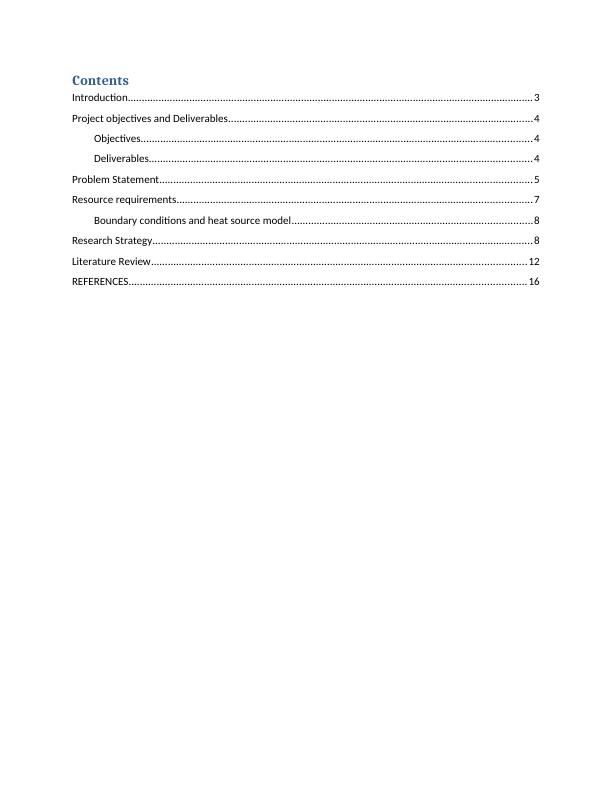Additive Manufacturing and Thermal Analysis of Ti-6Al-4V using ANSYS Software
Thermal simulation of laser powder bed fusion of Ti-6AL-4v using finite element method
18 Pages4150 Words394 Views
Added on 2023-04-11
About This Document
This paper discusses the use of additive manufacturing in the production of complex-shaped components of metals, with a focus on the development of a model for selective laser melting of Ti-6Al-4V using ANSYS software. The study aims to predict the distribution of temperature and induced residual stresses in the process. The research strategy involves in situ measurements of temperature and distortion, as well as comparison of different scanning strategies. The resource requirements include the use of ANSYS software and a heat source model. The paper also includes a literature review on the properties and applications of Ti-6Al-4V alloy.
Additive Manufacturing and Thermal Analysis of Ti-6Al-4V using ANSYS Software
Thermal simulation of laser powder bed fusion of Ti-6AL-4v using finite element method
Added on 2023-04-11
ShareRelated Documents
End of preview
Want to access all the pages? Upload your documents or become a member.
Ultrasonic Vibration Assisted Laser Engineered Net Shaping
|8
|1750
|98
Temperature distribution in Additive Manufacturing involving Titanium Alloy (TI-6AL-4V)
|10
|2713
|41
Effects Of Laser Scan Speed - Doc
|11
|2609
|199
Additive Manufacturing of Polymer-Based Composites Reinforced with Nano Particle
|3
|1374
|125
Fluid and particle dynamics in laser powder bed fusion
|14
|11136
|392
Additive Manufacturing in Titanium Alloys
|16
|3271
|29




